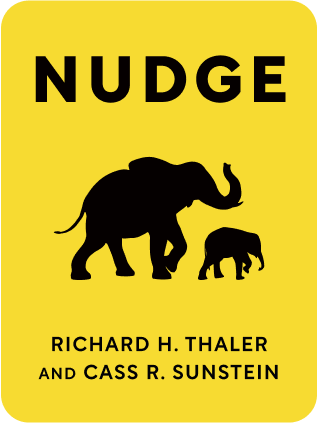

This article is an excerpt from the Shortform summary of "Nudge" by Richard H. Thaler and Cass R. Sunstein. Shortform has the world's best summaries of books you should be reading.
Like this article? Sign up for a free trial here .
What is the Nudge theory of change management? How do you encourage changes with nudges?
Nudge theory uses gentle directing or pushing to get people to make certain choices. Under Nudge theory, change management is about the individual.
Read on to understand the Nudge theory, change management, and how to use nudges to push in the right direction.
Nudge Theory of Change Management
Given humans’ innate propensity to make poor choices, whether through cognitive bias or social conformity or animal desire, are good decisions simply beyond us? Is there any way, other than severely restricting the number of choices available to us, that public and private entities can help us help ourselves?
Under Nudge theory, change management comes with the embrace of a new movement: libertarian paternalism.
Libertarian paternalism seeks to preserve liberty—that is, our freedom to do what we like, as long as it doesn’t infringe on another’s opportunity to do the same—while using techniques suggested by behavioral economics and psychology to point us in the most beneficial direction. In a libertarian paternalistic world, the public and private entities that present us with choices —“choice architects,” in Thaler and Sunstein’s terminology—use subtle strategies to push us toward the “right” choices. These “right” choices are the ones we would make for ourselves if we weren’t susceptible to cognitive bias, temptation, or social influence.
The Nudge theory of change management uses small pushes. These pushes, so subtle that the average person wouldn’t even recognize them as influencing his or her decision, are what Thaler and Sunstein call “nudges.” An effective nudge takes advantage of our decision-making weaknesses to steer us toward beneficial—or, at least, less harmful—choices.
Consider social influence, for example. As established just above, our tendency to follow the herd can get us into serious trouble. But a savvy choice architect can use that tendency to alter our behavior for the better.
An experiment conducted with the citizens of San Marcos, California, illustrates the point. Working with a sample size of 300 households, researchers informed each household of its energy consumption over the previous few weeks and included the average San Marcos household’s energy consumption. In the subsequent weeks, the higher-than-average energy consumers reduced their consumption, while the lower-than-average consumers increased their consumption. Each group wanted to be average.
But there was a further wrinkle in the experiment. Some higher-than-average consumers received a frowny-face emoticon along with their consumption statistics, while some lower-than-average consumers received a smiley face. The above-average consumers who received the frowning face showed an even larger reduction of consumption than the above-average consumers that didn’t receive one. And, whereas the below-average consumers who didn’t receive an emoticon raised their consumption to match the average, the below-average consumers who received a smiley face continued to consume at their lower rates. Simple social cues had outsize effects on behavior. The Nudge theory of change management uses simple cues such as these.
A Word About Markets
The free market, through its plethora of choices and heated competition to provide the best services at the best price, can take some of the guesswork out of decision-making. But it can’t turn Humans into Econs. In other words, only Econs have all the necessary information and experience to make the rational decision 100% of the time. That’s why, under Nudge theory, change management can’t be left to the markets.
Take the example of “extended warranties.” Most devices or appliances have only a minuscule chance of malfunctioning after the factory warranty expires, yet consumers are consistently convinced to pay for extended coverage (“Better safe than sorry,” we might say). An Econ knows that extended warranties are always a poor investment, but Humans don’t, and the firms providing the warranties have no incentive to nudge us away from them. Firms in a free market can benefit just as much from human frailty as human rationality—maybe more.

———End of Preview———
Like what you just read? Read the rest of the world's best summary of Richard H. Thaler and Cass R. Sunstein's "Nudge" at Shortform .
Here's what you'll find in our full Nudge summary :
- Why subtle changes, like switching the order of two choices, can dramatically change your response
- How to increase the organ donation rate by over 50% through one simple change
- The best way for society to balance individual freedom with social welfare






